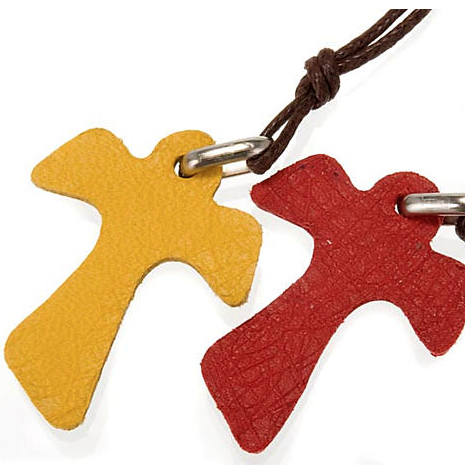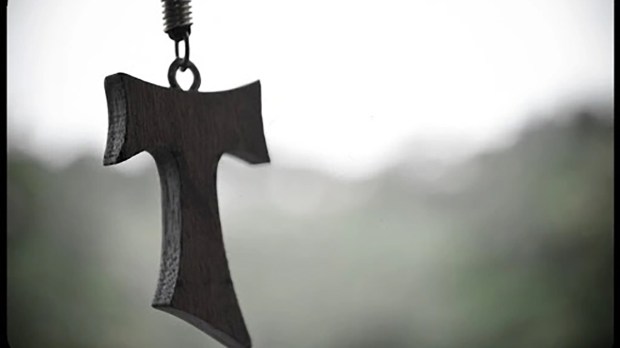At least once in your life you’ll be asked about the meaning of the cross, usually made of wood, which is shaped like a “T” and is often worn by Franciscan friars. With the help of the portal, St. Francis Patron of Italy, we sought to understand the meaning of the Tau.

Read more:
Tau cross pendants
Ancient Origin
Tau is the last letter of the Hebrew alphabet and was used symbolically in the Old Testament. It was already spoken of in the Book of Ezekiel: “The Lord said to him, ‘Go through the city, through Jerusalem, and put a mark upon the foreheads of the men who sigh and groan over the abominations… (Ez. 9:4). The Tau is the sign placed upon the foreheads of the poor of Israel, it saves them from extermination.
It was then adopted by the very first Christians, for a twofold reason:
- As the last letter of the Hebrew alphabet, it prophesied the Last Day and had the same function as the Greek letter Omega as it appears in the Book of Revelation: “I am the Alpha and the Omega, the beginning and the end. To the thirsty I will give water without price from the fountain of the water of life … I am the Alpha and the Omega, the first and the last, the beginning and the end” (Rev. 21:6;22:13).
- The Christians adopted the Tau, because its form reminded them of the Cross on which Christ was immolated for the salvation of the world.
What it is not
The Tau is not a magic amulet.
It is not a fetish, much less a trinket.
Nor is it a charm that is hung only because it “brings good luck.”
What is it a sign of?
It is a concrete sign of Christian devotion, but above all it is a sign of the commitment of one’s life to following the poor and crucified Christ.
It is a sign of the awareness of a Christian, i.e. of a child of God, a child who has escaped danger, of one who has been redeemed and saved. It is a sign of powerful protection against evil (Ez.9,6).
It is a sign willed by God for me, it is a divine privilege (Rev.9:4; Rev.7:1-4; Rev.14:1).
It is the sign of the Lord’s redeemed, of the unblemished, of those who trust Him, of those who see themselves as beloved children and who know that they are precious to God (Ez.9:6).
It is a symbol of the dignity of the children of God, for it is the Cross that held Christ.
It is a sign that reminds me that I too must be strong in time of trial, ready to obey the Father, and docile in submission, as Jesus was docile before the Father’s will.
“Look at the crucifix and it will teach you everything…”
St. Francis and the cross
Because of the Tau’s resemblance to the cross, this sign was very dear to St. Francis of Assisi, so much so that it occupied an important place in his life as well as his gestures. In him the ancient prophetic sign was actualized, regained its saving power and expressed the beatitude of poverty, which is an essential element of the Franciscan way of life.
“Whenever necessity or charity required, St. Francis marked with this seal the letters he sent” (FF 980); “He began all of his actions with it” (FF 1347). The Tau was therefore the sign dearest to Francis, his seal, the telltale sign of a deep spiritual conviction that the salvation of every man is only in the Cross of Christ.
Thus the Tau, which is backed by a solid biblical and Christian tradition, was received by St. Francis for its spiritual value. The Saint of Assisi took hold of this sign in a manner so complete and intense that, at the end of his life and through the stigmata impressed in his flesh he became the living image of the Tau that he had so often contemplated, drawn, and especially loved.
Why wood?
Wood is a very poor and flexible material, and the children of God are called to live simply and in poverty of spirit (Mt.5:3). Wood is a material that is easily crafted, and the baptized Christian too must be shaped in everyday life by the Word of God, in order to be a herald of the Gospel.
This article originally appeared in the Italian edition of Aleteia. Translated by Diane Montagna.

